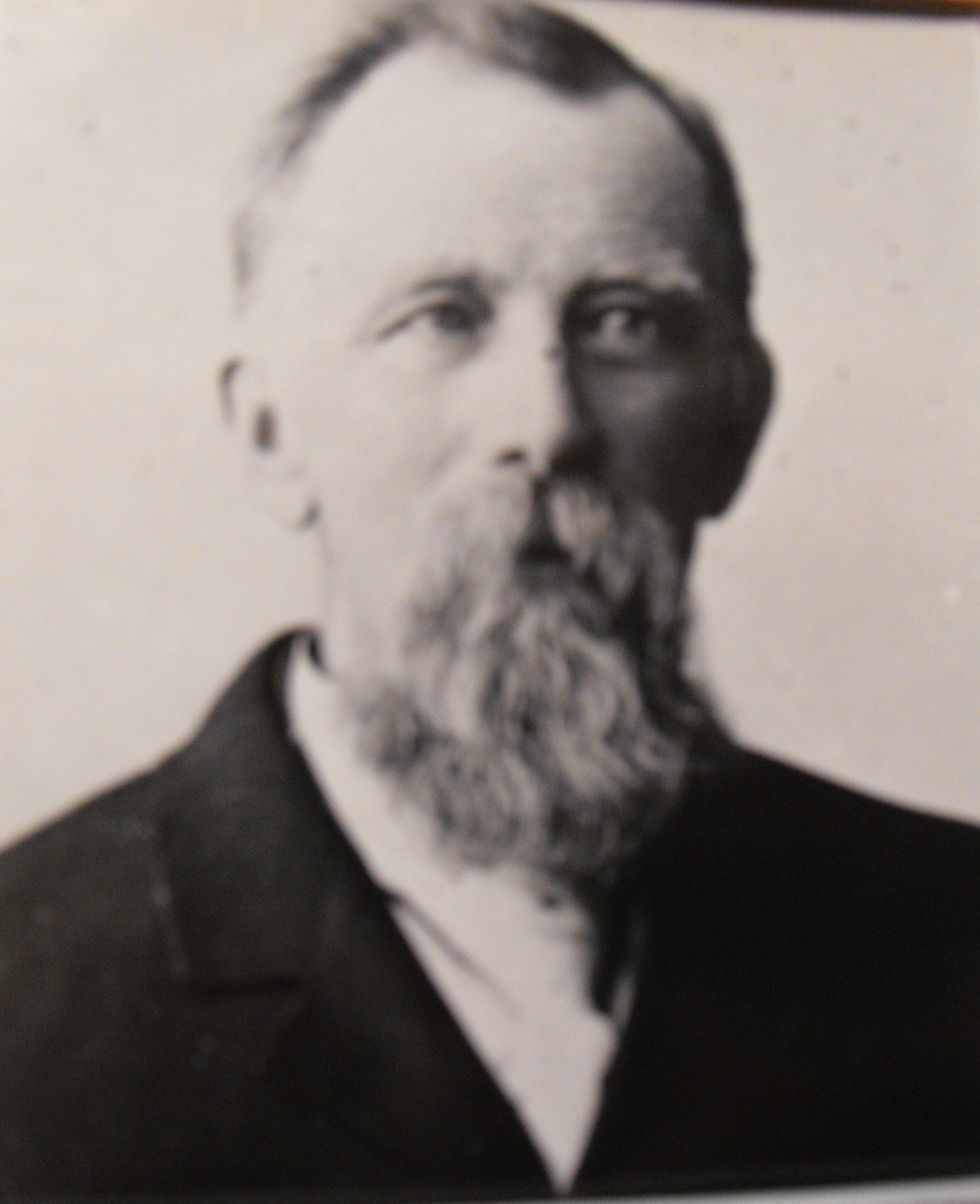122 2nd Street




Pioneer Peter Sherner was boarded by Sam Gates in about 1864 when he was 14 years old. Neighbors passing by the Gates cabin on Bingham Fort Lane (2nd Street) saw a young boy wearing Mr. Gates’ old clothes with sleeves and pant legs cut off to fit his size. He was a Danish immigrant with light blond hair that hung down straight almost to his shoulders. It was common practice for pioneers to board immigrant youth for help with farm or domestic labor. After a few years, the youth would move on to better opportunities or reunite with their own family. But Peter Sherner did not move on; he stayed and worked and boarded with the Gates and other families on 2nd Street and also managed to attend school. In time he matured, married and lived the rest of his life on 2nd Street. [1]
In 1873, nine years after his arrival, Peter married a neighbor’s daughter, Mary Elizabeth Hutchens. She was among those who first viewed and later described Peter standing in front of the Gates cabin wearing Mr. Gates’ oversized clothes. After their marriage, they boarded and worked for Mary Maxham at 214 W 2nd Street while Peter built a one-room adobe house at 122 2nd Street.
The property at 122 2nd Street was in poor condition. It still had a wheel and part of the old Gates Molasses Mill standing in a dry river bed where Wall Ave runs now. It took a team of horses and a scraper to level the land, take down the old mill, level crisscross river beds, and make a home site. Peter was a good carpenter and he thriftily recycled adobes, window casings, and doors taken from an old house that Mary’s father had torn down. [2]
For the first few years after their marriage, Peter accepted the position as teacher of the Lynne School and was assisted by his wife. Peter had many jobs during his life, but he always preferred teaching or carpentry work to farming. As the years passed, Peter enlarged the house to accommodate ten children. It became a 1½ story home with a hall-parlor plan. [3]
One day in about 1880, there was a humorous incident at this house between the Indians and three of the Sherner children. Mary Sherner found it necessary to go to a store three blocks away at Five Points and asked her five-year-old son, Lawrence if he thought he could take care of his younger sisters for about a half-hour. He said he could do this, and she hurried off to the store. When she was halfway home, she could see a number of Indians turn into their place, and she hurried as she knew the children would be frightened when she wasn’t there, even though they were used to seeing Indians. When she got to the gate, she saw the Indians looking through the windows and laughing. When the young Indians on horseback saw Mary, they rode out of the property, and the women moved away. Mary called to them and said, “What are you doing? Are you trying to frighten my papooses? You ought to know better than to come in when I am not here.”
Then she looked in the window. There stood 5-year-old Lawrence on the table, facing the window with one arm raised holding the stove lifter. His face was very pale and his eyes flashed in fright. He stood guard over his sisters whom he had pushed under the table behind him and pulled the oilcloth down over the edge so it completely hid the children. There he stood to hold the cloth in place. Mary’s heart ached in sympathy. She called to him, “Lawrence, I have come. Everything is all right now. Let me in.” The Indians left laughing, and how pleased the children were to have her return. [4]
Peter Sherner had a strong liking for trees and planted oak and horse chestnut trees in front of his house; one large oak still remains in 2021. On their 25-acre farm, Peter had a group of trees north of their house called The Grove. The Grove was used by church and community for dances, gatherings, and celebrations like the 24th of July. Peter did not care for farming, and in time his son, Lawrence effectively managed the farm. Peter taught new emigrants the English language, became president of the Scandinavian Society and secretary of Lynne Irrigation Company. He spoke several languages and served as an arbitrator for immigrant disputes. [5]
Mary had a talent for storytelling; in 1933 she dictated her life memories in stories to a daughter, Dorothy Amelda Sherner, who transcribed them into a 200-page manuscript titled, Mary Elizabeth- Her Stories. These remarkable stories portrayed Mary’s family and encompassed a unique history of the Lynne Community. Peter died in 1899 and Mary in 1935.
Eventually, the 12-inch adobe walls of the Sherner house were covered with a cement-like stucco on the exterior. The house has a unique and pleasing architectural design and has been a stately landmark on Second Street for over 140 years.
[1] - Autobiography of Mary Elizabeth Hutchens Sherner, transcribed by Dorothy Sherner, Mary Elizabeth-Her Stories, manuscript, 1933, p.79; Dorothy Amelda Sherner, Memories, manuscript.
[2] - Dorothy Sherner, Memories; Unknown author, Peter Lorenson Sherner, manuscript.
[3] - Ibid.
[4] - Autobiography of Mary Elizabeth Hutchens Sherner, transcribed by Dorothy Sherner, Mary Elizabeth-Her Stories, manuscript, 1933, p.81.
[5] - Unknown author, Peter Lorenzo Sherner.
